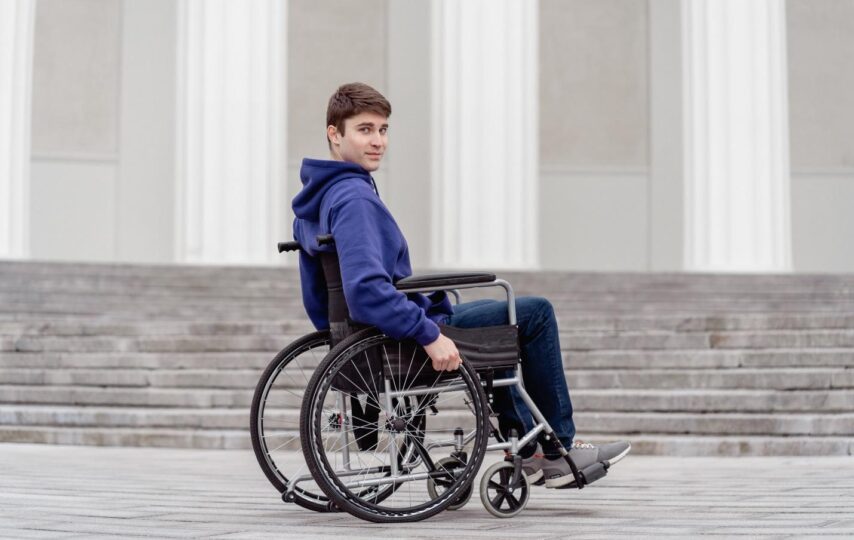A manual wheelchair is a self-sufficient chair. It does not need an external power source to function, but requires the ability of the user to push and man oeuvre it from place to place. The caregiver inserts a footplate into the back of the chair and propels it by pushing and pulling on two collapsible levers in front, one for each hand. This motion moves the wheels and allows for mobility.
The benefits of using a manual wheelchair involve greater independence, body strength, ease of use, accessibility, cost-effectiveness, durability and safety.
Manual wheelchairs are a popular choice among many wheelchair users. They are preferred in rural areas and can be used on uneven terrain and indoors with ease. Manual wheelchairs offer the user more control and independence, which enables them to function in their everyday life on their own.
What are the Benefits of Using a Manual Wheelchair?
One of the benefits of manual wheelchairs is that they are extremely cost-effective. Manual chairs usually cost less than $1,000 while electric ones range from $2,000-$6,000. They use less energy and have lower maintenance costs as well as they do not require batteries or other types of external power sources to operate.
Manual Wheelchairs are the most commonly used type of wheelchair available for people with disabilities. Manual wheelchairs are typically preferred to electric or hybrid wheelchairs because they are less expensive, lighter, and easier to push and maneuver.
A manual wheelchair is a chair without any motorized components that is propelled by the person in the chair through use of their arms or hands (hence “manual”). Manual wheelchairs may be operated either seated or standing. When operated while seated, they require a caregiver to push them from behind. When operated while standing, they require greater balance to operate but also allow faster speeds.
Manual Wheelchairs are considered to be the most cost-effective option for those seeking mobility. Manual Wheelchairs require no batteries, which mean that their maintenance costs are low and they can remain operational even when there is a power outage.
The benefits of using a manual wheelchair are plentiful because of how they allow you to move as you please. Unlike electric or hybrid wheelchairs, manual wheelchairs do not have any motors or other mechanical parts and use your arms instead.
Manual Wheelchair User’s Guide
A manual wheelchair is a chair that does not have an electric motor or any other power source. It is designed for people who are unable to use their arms, hands, or upper body effectively to use a powered chair.
The many benefits of the manual wheelchair are:
They are more affordable than their electric and hybrid counterparts
- They require less maintenance and care in order to operate
- They produce lower CO2 emissions when used which contributes to the environment
- Manual wheelchairs can go anywhere as they do not need a power plug up to charge them.
Unlike other wheelchairs, manual wheelchairs are considered more suitable for people with a low degree of mobility and weight-bearing strength.
A manual wheelchair is a mechanical device that can be pushed by the user. This type of wheelchair has four wheels which are powered by the person who is using it. For someone to operate this device, they will need to use their arms and core muscles to push the device. Alternatively, they can use their feet as well.
Most people prefer using a manual chair because there is lower risk of injury when using them. They are easier to use so there is lower chance of injury for the user too.



